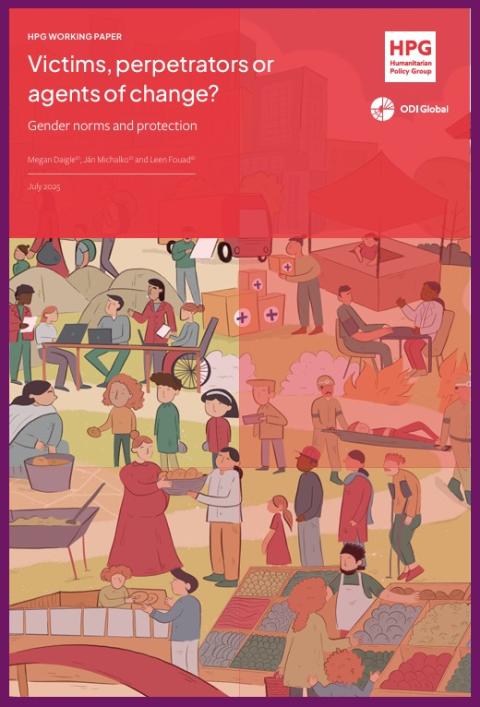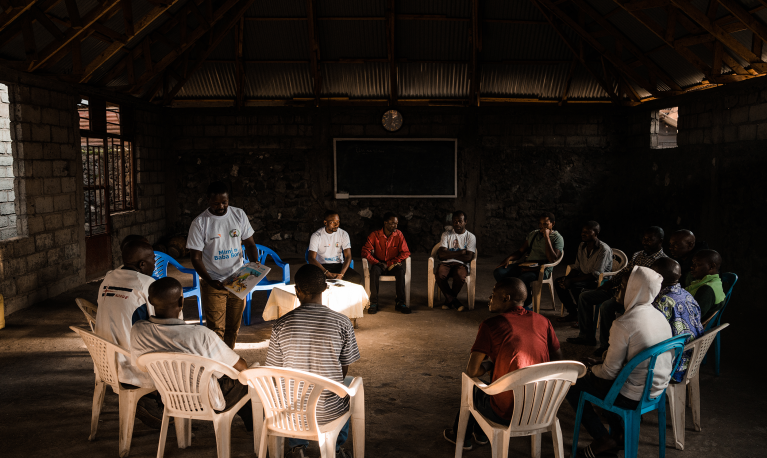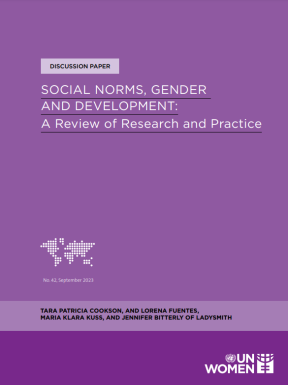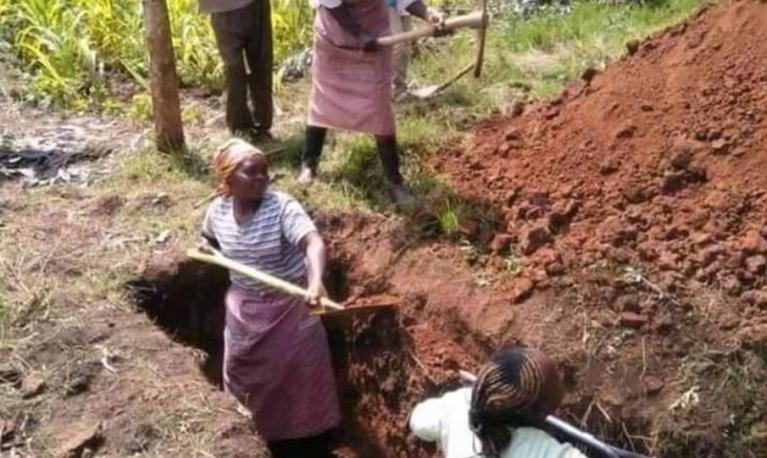- Briefing paper
- 10 July 2025
Victims, perpetrators or agents of change? Gender norms and protection
- Author: Megan Daigle, Ján Michalko, Leen Fouad
- Published by: ODI Global

The humanitarian sector is set to change once again: the ‘humanitarian reset’ comes in the face of cuts to aid from government donors, most notably the United States. The wider political landscape continues to push back against gender justice, but a gender lens remains essential to effective risk analysis and delivery of life-saving humanitarian action, including protection.
Responding to this challenging context, this research seeks two main objectives. Firstly, it expands humanitarian actors’ understanding of gender norms and their impact on humanitarian crises (with a focus on conflict) and humanitarian response by challenging the often uncritical deployment of gendered tropes (‘victims’, ‘perpetrators’ and ‘agents of ‘change’). Secondly, it assesses how the humanitarian system could address the systemic features that drive this approach to gender norms and protection in the context of rising anti-gender politics and a crisis of multilateralism.
Ultimately, the paper encourages the sector to use the ongoing humanitarian reset as an opportunity to foster more nuanced, inclusive and effective humanitarian and protection action. Doing so is essential to avoid returning to a chronically insufficient back-to-basics approach, which would be a disservice to affected people and would almost certainly cause them further harm.
Key messages
Gender norms shape risks and proposed solutions in conflict, crisis and inside humanitarian agencies. This includes risks of gender-based violence, a key concern for humanitarian action. Reducing risks is the responsibility of all humanitarian actors, and therefore all humanitarian actors – including protection specialists – should apply an understanding of gender norms to achieving protection as an outcome for people in crisis.
A gender-responsive approach to protection is one that recognises and challenges how gender norms shape protection analysis and outcomes. The three tropes commonly used by humanitarian actors that we identify and deconstruct here – victim, perpetrator, agent of change – are tools to show how gender norms are at play in the humanitarian sector’s protection action and how, knowingly or not, humanitarians (including protection actors) are likely to continue perpetuating these norms if they fail to deploy a gender-responsive lens.
Protection efforts that fail to incorporate a gender-responsive lens and rely on assumed gender norms risk doing (more) harm. This is because they fail to see risks and agency beyond a narrow understanding of gender norms as they exist in a particular context; meaning that (1) some people at risk fall through the cracks, even though the risks they face are gendered, and (2) the agency of diverse crisis-affected people, especially women and girls, in achieving protection for themselves and others is undermined or erased.
Analysis of gendered risks must be maintained and improved through the restructuring of international humanitarian action. It cannot be assumed that comprehensive protection risk analysis will surface gendered risks without deliberate, intentional effort to ensure that they do, because gender norms and stereotypes, as shown on the three tropes, are unconsciously woven into the system. The GBV Area of Responsibility has brought needed attention to gendered risks, and while embedding this work across the sector may ultimately strengthen the centrality of protection, this cannot come at the cost of making gender and protection everyone and no one’s job.
- Tags:
- Conflict, Humanitarian emergencies
- Countries / Regions:
- Global
Related resources
Blog
27 October 2025

Briefing paper
6 November 2023

Case study
1 September 2021
